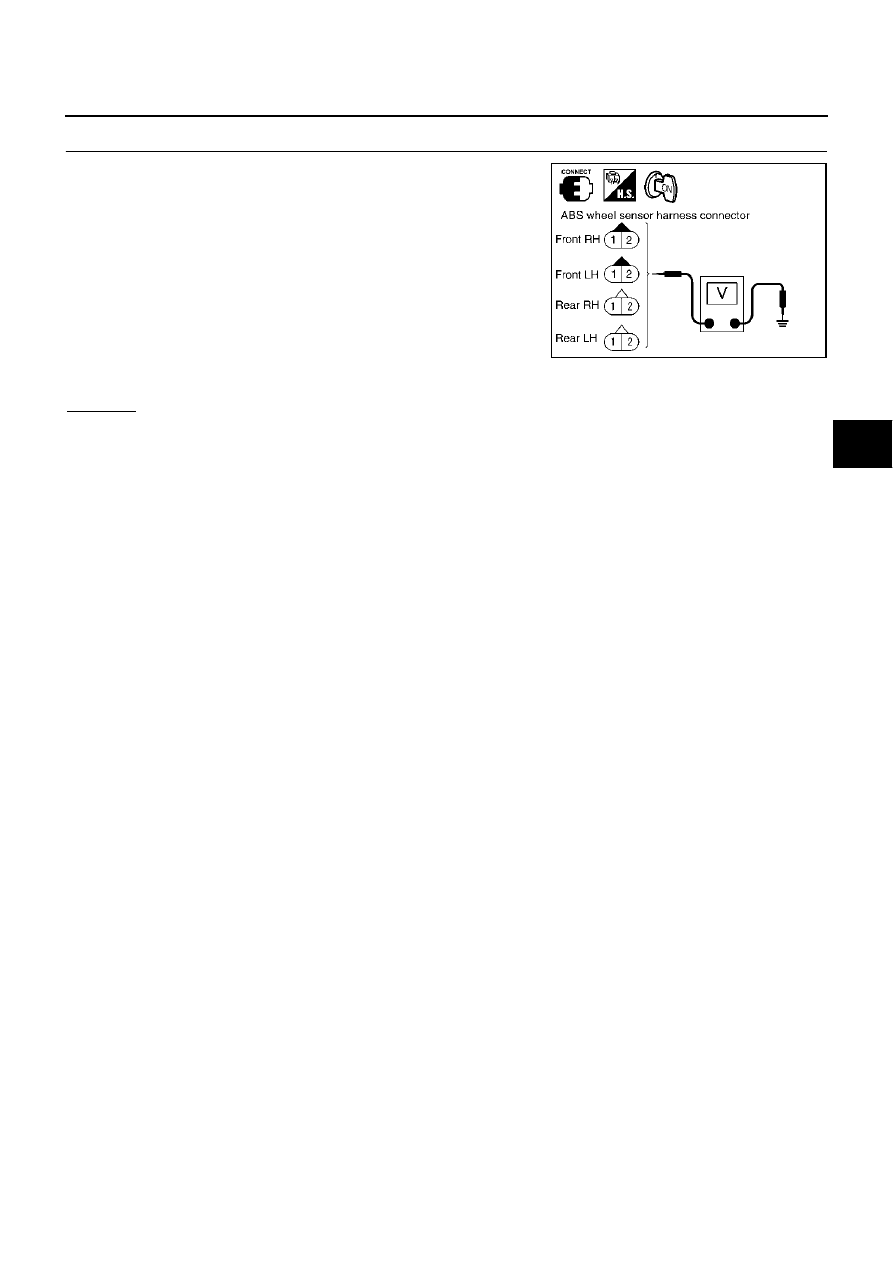Nissan Murano Z50 (2003 year). Manual - part 52

TROUBLE DIAGNOSIS
BRC-53
[ABS]
C
D
E
G
H
I
J
K
L
M
A
B
BRC
Revision; 2004 April
2003 Murano
6.
CHECK WHEEL SENSOR POWER SUPPLY CIRCUIT
1.
Connect wheel sensor connector E20 (FR - LH), E27 (FR - RH),
B202 (RR - LH), B203 (RR - RH) and ABS actuator and electric
unit (control unit) connector E24.
2.
Turn ignition switch ON and check voltage between power sup-
ply terminal and ground.
OK or NG
OK
>> Replace wheel sensor.
NG
>> Replace ABS actuator and electric unit (control unit).
Voltage
Front RH
1 (B) - Ground
: 8 V or more
Front LH
1 (G) - Ground
: 8 V or more
Rear RH
1 (LG) - Ground
: 8 V or more
Rear LH
1 (L) - Ground
: 8 V or more
PFIA0427E